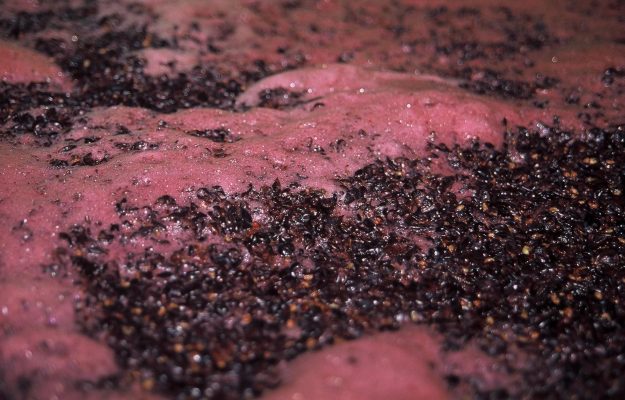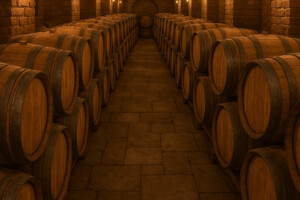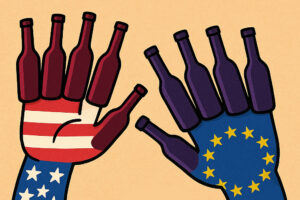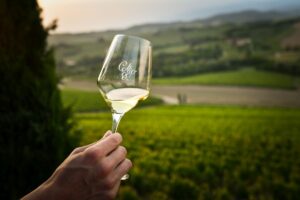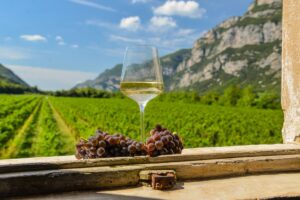With the exception of a few bunches of early varieties already in the cellar for days, in different areas of Italy, and a harvest that is advancing slowly, while many wine areas of Italy are dealing with the heat and a lack of water, the harvest 2021 is taking shape step by step. And while the bulk of the harvest is still some way off, many are reporting significant increases in the prices of grapes, musts and bulk wines, between +20% and +30% compared to 2020. This concerns grapes for table wines or generic wines, but also territories and varieties where something is already moving, such as Prosecco and Pinot Grigio in Veneto, Primitivo in Apulia and Chianti in Tuscany, in an upward trend that is announced, however, generalized throughout Italy. Increase due largely to a collection that is announced poor for the frosts of April 2021 and limited summer rain (the estimates of the Unione Italiana Vini - Uiv, Assoenologi and Ismea speak of -9% compared to 2019 at the national level) and that, “combined” with those of electricity, transport or materials such as glass, for example, raise the attention of producers, traders and large retailers, because in some way will be absorbed and partly poured on consumption. Without considering the very strong competition, on generic wines, of Spain, which has already started to make market at low prices, especially in Germany. This is the situation outlined to WineNews by Andrea Verlicchi, president of Med. & A. (Associazione Nazionale Agenti d'Affari in Mediazione e Agenti di Commercio - National Association of Business Agents in Mediation and Trade Agents), who, together with Unione Italiana Vini (UIV), has created the Grape Price Observatory, with daily updates published online.
“We are just at the beginning of the harvesting campaign - explains Verlicchi - and there is already a lot of confusion for these price increases, partly justified by the lowering of the forecasts of the harvesting estimates, from Veneto to Emilia Romagna, from Piedmont to Tuscany, from Apulia to Abruzzo. The first region to harvest was Sicily, but here we do not quote particular prices because 95% of the market of grapes is made by contributions to cooperatives, while in Apulia we have quoted Primitivo, which has risen a lot on 2020, the prices of grapes have exceeded 1.3 euros per kilo, in 2020 they went from 90 cents to 1 euro, so a significant increase, and moreover on grapes with an alcohol content lower than 2020, and then the tension is at maximum levels. Among the cheapest grapes, we are talking about Trebbiano and Sangiovese - continues Verlicchi - we had an increase at the end of August, at the beginning of the harvest, due to some requests for the immediate need of dumb musts (musts whose fermentation is stopped with sulphur dioxide, ed), and then Sangiovese started at prices much higher than 2020, while today we see a stabilization of prices. It must be said that everything is in progress, there are still few contracts on wine, especially the dumb must is moving, but obviously prices are much higher than the 2020 harvest”.
In a production system as varied and articulated as the Italian one, it is difficult to outline a common trend at the national level, but, according to Verlicchi, it is not hazardous to speak of increases, on average, even of 30%. “In fact, there are even higher peaks. Clearly everything is evolving, we should have started quoting grapes in Emilia-Romagna today, but instead we will do so in a couple of days because the harvest is late. But there is a price tension between the production that demands an increase in quotations, and the buyer who fears the market situation today, which, compared to the end of August - early September, is less euphoric. There is the fear of working with grape prices fixed today, without knowing at what price the wine will be resold tomorrow, especially on varieties such as Trebbiano here in Romagna, for example”.
But it is undeniable that price increases are already predictable and in some cases already effective, Verlicchi explains, even on important denominations. “On Prosecco, for example, in the first contracts made we are already at 1.85-1.9 euros per liter, for Pinot Grigio on 1.05-1.10 euros, with important increases on the average sales of 2020. In Piedmont, it is still early, the red grapes are starting to be harvested in these days and the prices of the generic wines of Veneto are not yet available, as the Garganega will start to be harvested next week. In Tuscany, instead, we have already had an increase in the prices of Chianti, starting from the past months, because there was little availability of product, even of 20% in March, and then again after the spring frosts. Today Chianti has not yet been traded, but from many quarters there is talk of prices going from a minimum of 1.7-1.8 per liter on the 2021 product, and even in this case with substantial increases on the 2020 harvest”. In short, the tension on prices is generalized, especially in the segment of generic and table wines, now a minority of Italian production, but still 30% of the total in quantity, and where the difference on the market is often played on cents. “And you can’t increase the price too much, because otherwise the wine won’t sell, even if we will do the accounts at the end”.
“Another fundamental thing to be taken into consideration is the competition from Spain on generic wines. Spaniards - adds the president of Med. & A. - have already started to sell the new product in pre-harvest (the quotations of common Airen grapes are 20-25 cents per kilo, Tempranillo PDO or PGI is 31-35 cents, ed.), and have made significant sales in Italy, Germany and France, while we are still at the pole, because our prices started much higher. It is necessary to look at this carefully, because it is true that even Spain is now raising prices a bit, but they are selling, while we, especially in Veneto and Emilia Romagna, have not done any business with our German bottlers. It's not like in 2017, when both Italy and Spain both raised prices and started selling together, they have already started and are already way ahead”.
A situation, then, that is far from simple. And that calls into question a wider reflection, that of the remuneration of agricultural work and the production of raw material, which, in the case of wine, obviously, is grapes. With price increases that, on the one hand, should also be seen in a positive light, as long as they are not always passed on to the weakest links in the chain. “It’s a complex issue. In addition to the increase in grape prices, there is the fact that everything that revolves around the price of bottles has increased: glass, transport and so on. And it would be important that large-scale distribution, which happens often, does not further crush the supplier, and therefore the bottler, on price. Today - underlines Verlicchi - we have increased on all raw materials, increases on the price of wine not only because there is less production, but also because the prices of fertilizers and pesticides are increasing, as well as labor, which is difficult to find. And so we need to increase the prices of certain grapes. Also to make viticulture a prevalent professional activity, while in many areas it is still almost a hobby, often because that hectare of vineyard yields too little to give a real income to a family or a person. It is necessary to sensitize the distribution, because part of these increases, dictated by many factors, are passed on to the distribution itself, and a little, unfortunately, also to the consumer. Because these price increases, in some way, today, are necessary”.
Copyright © 2000/2025
Contatti: info@winenews.it
Seguici anche su Twitter: @WineNewsIt
Seguici anche su Facebook: @winenewsit
Questo articolo è tratto dall'archivio di WineNews - Tutti i diritti riservati - Copyright © 2000/2025










